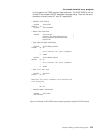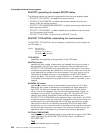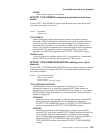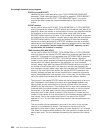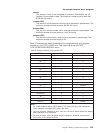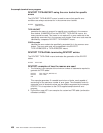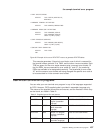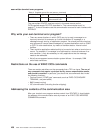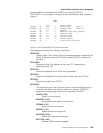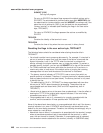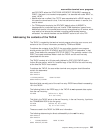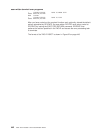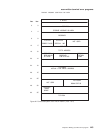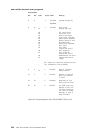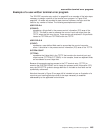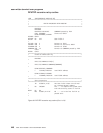You generate the communication area DSECT by coding DFHTEPCA
TYPE=DSECT in your program. The layout of the communication area is shown in
Figure 21.
The parameter list contains the following information:
TEPCALDS
Function Code. The Function Code is a printable character representing the
identity of the task within the TCP which invoked DFHTEP. It always has
the value ‘1’.
TEPCAGDS
Component Code. This always has the value ‘TC’, representing a
component of the TCP.
TEPCATCA
Contains the address of the TACLE being processed.
TEPCECIA
Contains the address of the terminal control table user area (TCTUA).
TEPCECIL
Contains the length of the TCTUA.
TEPCAACT
The User action byte. One of the main uses of the communication area is
to transmit the actions that are to be taken for a terminal. TEPCAACT
contains the following flags, which can be reset within DFHTEP:
LINEOS (X'80')
Place line out of service
NONPRGT (X'40')
Nonpurgeable task exists on the terminal
TERMOS (X'20')
Place terminal out of service
ABENDT (X'10')
Abend the task on the terminal
ABORTWR (X'08')
Abend write, free terminal storage
RELTTIOA (X'04')
Release TCAM incoming message
IN/OUT
PARM
0XL4 Standard Header
TEPCALDS DS XL1 I Function Code Always '1'
TEPCAGDS DS XL2 I Component Code Always 'TC'
DS XL1 Reserved
TEPCATCA DS A I Address of TACLE being processed
TEPCECIA DS A I Address of TCTUA
TEPCECIL DS H I Length of TCTUA
TEPCAACT DS XL1 I/O User action byte
TEPCATID DS CL4 I Terminal identity
TEPCATDB DS F I Current time of day binary
Figure 21. The DFHTACP/DFHTEP communication area
user-written terminal error programs
Chapter 8. Writing a terminal error program 439



